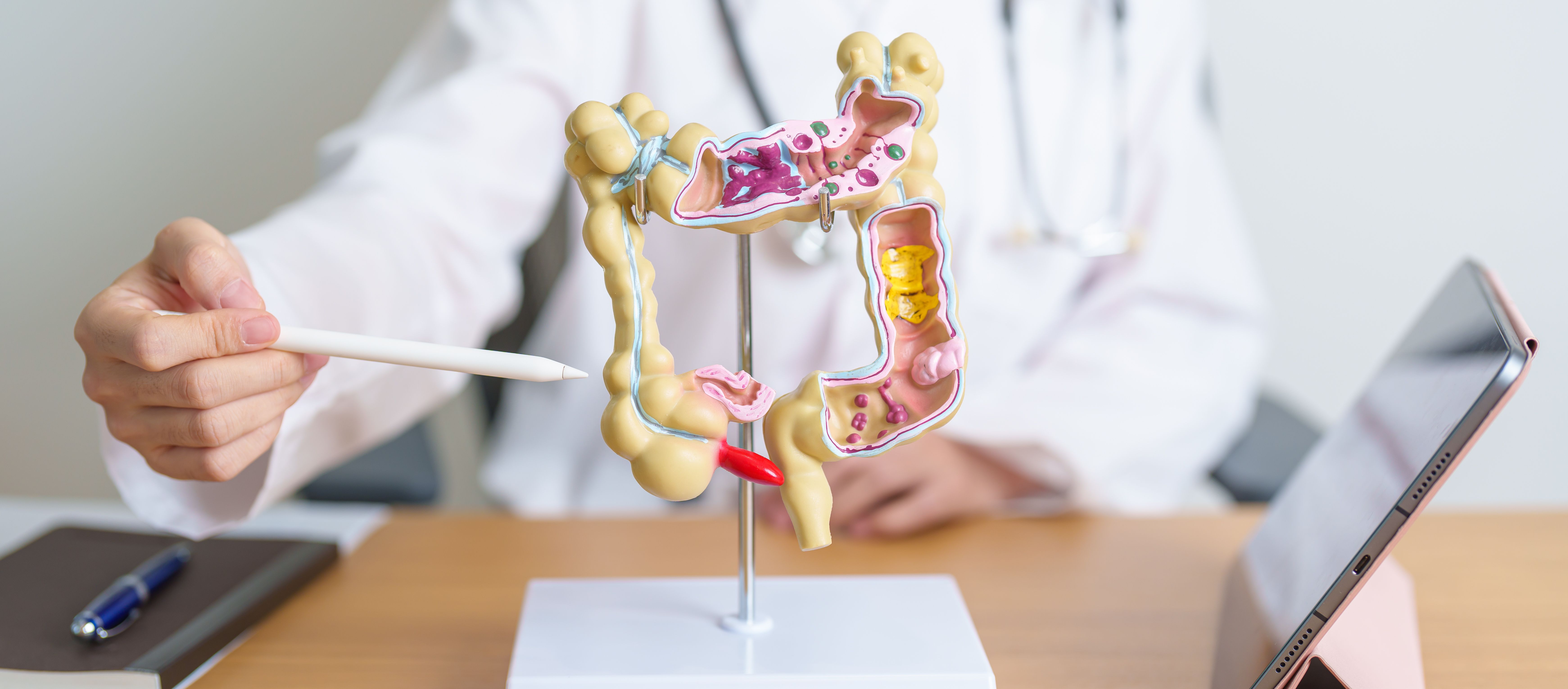Key Takeaways:
- Enterococci and C. difficile Interaction: Enterococci, particularly vancomycin-resistant enterococcus, become enriched in the gut during C. difficile infections (CDI) and research suggests that enterococci may alter the gastrointestinal (GI) environment, promoting C. difficile colonization and growth.
- Inflammation and Toxin Production: Enterococci are positively associated with inflammation in CDI patients, as indicated by increased white blood cell counts, with in vitro experiments showing the presence of enterococci enhances C. difficile toxin production and gene expression, suggesting a direct impact on C. difficile virulence.
- Metabolic Interactions: E. faecalis, a type of enterococcus, is found to reshape the metabolic environment and provide fermentable amino acids—particularly ornithine—which is crucial for polymicrobial interactions and CDI pathogenesis.
Enteric infections are polymicrobial as pathogens become exposed to a microbial ecosystem and metabolic environment during gastrointestinal (GI) tract invasion. Although Clostridioides difficile (C. difficile) is one of the most significant enteric pathogens, little is known about how it cooperates with the microorganisms that live in the GI. Enterococci, which are enriched in the gut when infected with C. difficile, are vancomycin-resistant enterococcus (VRE) that often infects individuals alongside C. difficile. A study published in Nature explored the association between enterococcus and C. difficile during infection and quantified enterococcus burdens in in adult and pediatric patients.
Prior research that examined mice infected with C. difficile following antibiotic-mediated depletion of endogenous enterococci found that the bacteria may alter the GI environment following treatment with antibiotics that support C. difficile during early colonization events. Further, enterococci were observed to outgrow in the gut after treatment with antibiotics independent of toxin. The data is consistent with prior studies that demonstrate the ability of enterococci to form following antibiotic perturbation, further supporting that C. difficile damage mediated by toxins provide an added fitness advantage, according to the study authors.
Further, to evaluate impact of enterococci on C. difficile pathogenesis, the authors examined the relationship between enterococcus relative abundance based on the 16S rRNA gene sequencing and maximum peripheral white blood cell (WBC) count in a cohort of adults with C. difficile infections (CDI). They found that enterococcus was positively associated with inflammation, with WBCs increasing by 3.03 thousand cells per microliter. In addition, to determine whether enterococci directly impact C. difficile virulence, the authors quantified C. difficile toxin production in the presence of enterococci in vitro. Toxin gene expression and toxin production were found to significantly improve following growth with the E. faecalis strain OG1RF in liquid culture, and C. difficile toxin production had also increased.
The study authors performed RNA sequencing of co-cultures and found that C. difficile transcripts linked to carbohydrate uptake, amino acid utilization, and Stickland fermentation were altered significantly when in the presence of E. faecalis, which suggests significant metabolic reprogramming occurs, according to the investigators. To generate distributions of activity for metabolic reactions, growth was iteratively simulated under near optimal context-specific conditions. Further, the metabolic network reconstruction of C. difficile and the generation of context-specific models for C. difficile.
In addition, the authors predict that E. faecalis reshapes the metabolic environment and acts as a source of fermentable amino acids for C. difficile. To support this prediction, they measure amino acids in cells living in microcolonies. They found that E. faecalis held high levels of fermentable amino acids and exported high levels of extracellular ornithine, depleting arginine when grown in culture.
E. faecalis catabolizes arginine for energy along the arginine deiminase (ADI) pathway and during this uptake, ornithine is exported through the ArcD antiporter. Further, ornithine is necessary in polymicrobial interactions in E. faecalis and is potentially central to C. difficile-E. faecalis interactions, according to the authors.
Further, to define the role of metabolic interactions during infection, the authors performed imaging on ceca from cefoperazone-treated mice with CDI that held high levels of enterococcus. The findings presented high amounts of ornithine in the lumen following infection; however, arginine was reciprocally localized in tissues but not present in the lumen.
In addition, the authors explored fecal metabolome of children with inflammatory bowel disease (IBD) and CDI to find consistencies in the research that involved mice. Patients with IBD plus CDI held much higher levels of amino acids, including ornithine and leucine as well as Stickland fermentation end products, which is consistent with the prior research. Further, there was a positive correlation between C. difficile burdens and ornithine, which supports the mechanism for ornithine in CDI.
The authors explained that understanding the factors that lead to clinical outcomes of CDI is essential in treating the infection. Their findings demonstrate that enterococci can enhance the pathogenesis of C. difficile by increasing the number of toxins produced and by promoting its growth. Further, the authors found that enterococci can co-localize with C. difficile in the gut during infections.
Understanding the interactions between microbes in the gut can be significant for developing approaches for infection treatments and preventions, according to the authors. They note that further research is needed to fully understand the complex interactions between microbes and the GI system as well as their influence on individual health.
Reference
Smith AB, Jenior ML, Keenan O, et al. Enterococci enhance Clostridioides difficile pathogenesis. Nature. 2022;611(7937):780-786. doi:10.1038/s41586-022-05438-x







